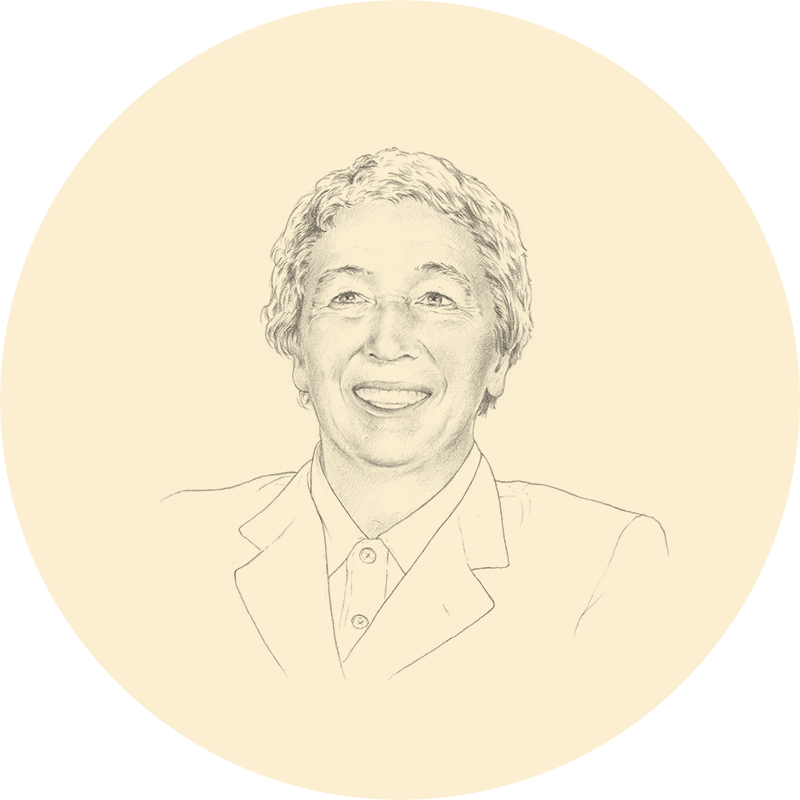There is a discreet door, camouflaged to the point of nearly vanishing. It is the point of contact between two buildings, one with an entrance on Via Fiori Oscuri, the other on Piazza San Marco. A fairytale door, where like Alice and the mirror you passed from one world to another, one identity to another. On one side there was la Gae, on the other l’architetto Aulenti.
You were born in Friuli, where your father Aldo worked as an accountant, scion of “a family of judges, lawyers, doctors and bishops” with roots in Apulia and Calabria. As a girl you moved to Biella with your family, where you restlessly longed for a high school in Florence, to get away from home. The war put a stop to those plans, and the partisan cause determined your ideals. You completed your schooling in Turin, but you were clear about the next step: “as soon as I could, I chose Milan and the Politecnico.” You graduated in 1953 and never left this city.
There were few women at the Politecnico: Anna Ferrieri, then Castelli by marriage, or “Cini” Mariani Dameno, then wed to Boeri. You also got married, Gae, fresh out of college, with a classmate, but you had no intention of taking his surname: you had a daughter with him, Giovanna, but you hadn’t the slightest interest in being a housewife. You lived on Via Cesariano, and one room in the apartment was set up as your studio. Those were the years of research and encounters. A tireless reader, curious and enthusiastic about everything, you traveled in the world “in pursuit of architecture and its protagonists.”
The editorial staff of Casabella was your experimental proving ground, where Ernesto Nathan Rogers, a true adoptive father, had the task of supervising the “cockfight” of your boisterous colleagues: Vittorio Gregotti, Aldo Rossi, Guido Canella. You watched them with amusement, the only woman in the group, “pretending not to notice.” Because you never wanted your gender to become a limitation.
Milan was a city where you worked on competitions late into the night, after which you went dancing till dawn. You had bangs like Crepax’s Valentina, knee-length skirts and flats. Italian design was being born, thanks to older siblings – Magistretti, Zanuso, Castiglioni – and contemporaries of the “third generation,” the one Alberto Arbasino had described as “angry,” an irascible, political generation. For you, champing at the bit, it seemed like “intellectual bricolage on a small scale, on the leftovers of the golden age.” But you were there, and Adriano Olivetti also took notice, deciding to assign you the design of two stores, in Paris and Buenos Aires. Theory became practice. You created stores like urban works of architecture, and you invented lighting systems that due to their quality were immediately put into production: the zoomorphic Pipistrello, the futuristic King Sun. There are objects that seem timeless, and others such as your Rimorchiatore and Ruspa lamps, or your Locus Solus garden furniture, that seem to define the spirit of the times, better than many others.
